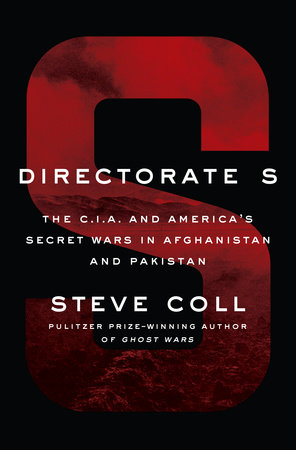The Afghan War

By Jackson Holahan
The story of Operation Enduring Freedom, the US’s war in Afghanistan that began in September 2001, is one of great contrasts. In just over four weeks, diverse elements of the US military and civilian agencies developed and executed a successful battle plan. Before the year was out, coalition forces had removed the Taliban from power and established an opposition government, led by Hamid Karzai, that was recognized by the United Nations.
The swift tactical victory in the winter of 2001 has since given way to a 16-year diplomatic and military stalemate leaving all major participants, primarily Afghanistan, Pakistan, and the US, with a limited and increasingly undesirable set of strategic options for the future.
In "Directorate S: The C.I.A. and America’s Secret Wars in Afghanistan and Pakistan 2001-2016," Steve Coll unravels the adventures and misadventures of the principal powers and individual actors throughout the uneven arc of this multi-decade war. "Directorate S" is the sequel to Coll‘s Pulitzer Prize-winning "Ghost Wars," which tracks the key players and events across Central Asia, the Middle East and the United States that ultimately led to 9/11. "Directorate S" is titled after the eponymous group within Pakistan’s national intelligence service that trains and arms proxy militant forces throughout Central Asia. In both books, Coll’s meticulous research and well-placed sources combine to create a play-by-play drama portraying the personalities and relationships that drive public policy and shape world events.
Throughout "Directorate S," Coll takes steady aim at Pakistan, highlighting the country’s duplicitous role in supporting militant groups in Afghanistan, including the Taliban, while also purporting to be a steadfast counterterrorism partner, justifying the billions of dollars of military and economic aid it receives annually from the United States and its allies.
While Coll is not the first to question Pakistan’s double game, "Directorate S" is the most comprehensive unclassified account to expose it by leveraging numerous sources across the domestic and international government and intelligence communities.
In an effort to highlight the countless complexities of the Afghan war, Coll always errs on the side of including more, rather than less. There are significant divergences into topics such as the rise in the number of deaths of NATO troops at the hands of Afghan soldiers that, while important to grasp, contribute little to the broader narrative of strategic engagement in the region.
Coll’s recounting of the seemingly endless number of strategic reviews and studies commissioned by the White House, Pentagon, CIA, and State Department has the intended effect of demonstrating bureaucratic entanglements at their worst. In the absence of any comprehensive, long-term strategy, inter-agency policy conflicts were solved by letting various agencies execute according to their own views under broad, often under-enforced guidelines. Not surprisingly, this was hardly a viable solution at all.
Coll is at his best when illustrating the interpersonal dynamics of critical relationships, such as those between Presidents Bush and Obama with President Karzai, that are often obscured from the public eye. Similarly, he captures the triumphs and struggles that American heads of state, military leaders and senior diplomats have with their counterparts in Afghanistan and Pakistan. Coll wisely focuses on the US government as well, analyzing how bureaucratic infighting and big, often clashing, personalities led to a foreign policy that was frequently inconsistent and often contradictory.
Coll is among a select few English-language journalists who has reported from and lived in Central Asia over the past 30 years. His relentless reporting and fastidious cultivation of sources is his hallmark, and "Directorate S" is no exception. In a region that has confounded empires and foreign armies for centuries, it is difficult to envision a tidy, simple solution to the numerous challenges that the US and its allies face in Central Asia.